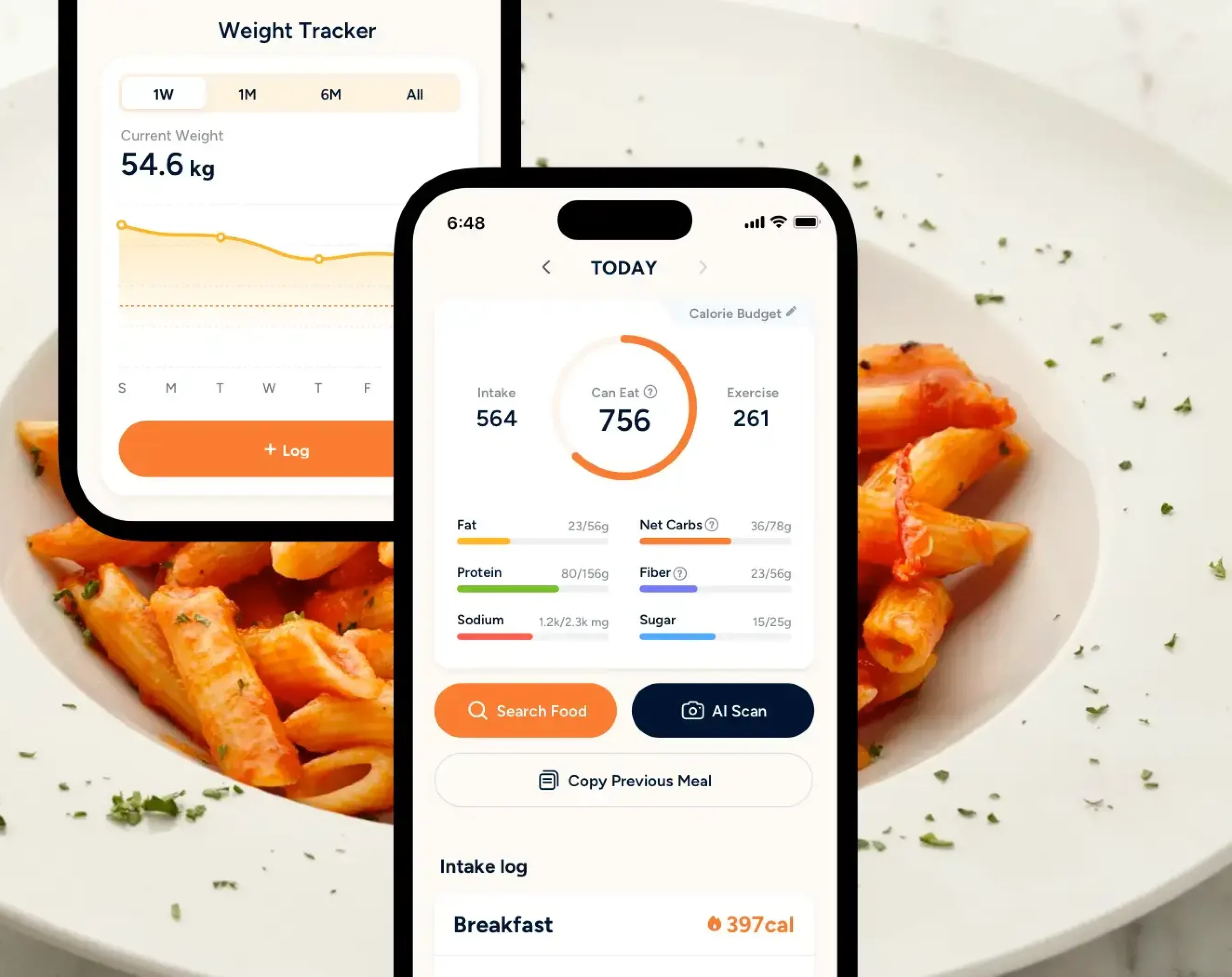For many, eating feels like a simple daily task that is enjoyable and many look forward to. But for those with an eating disorder, it can be a source of anxiety, shame, or fear. Eating disorders affect millions of people. In fact, 9% of the US population is estimated to have an eating disorder in their lifetime.
Eating disorders should not be labeled as just a phase or a result of “picky eating” habits. Rather, it is a condition that affects mental health, physical growth, and overall well-being. Recognizing the signs, understanding the risks, and knowing the treatment options is key to offering support and finding a path to recovery.
Key Takeaways
- Eating disorders are serious mental health conditions that can affect eating behaviors, body image, and overall well-being.
- It affects anyone regardless of age, gender, or body type.
- Common types of eating disorders include norexia nervosa, bulimia nervosa, binge eating disorder, pica, rumination disorder, and ARFID.
- Psychological, biological, social, and developmental factors, as well as comorbidities like OCD and ADHD, can contribute to the development of eating disorders.
- Effective approaches combine medications, nutrition counseling, psychotherapy (CBT, DBT, FBT), medication for co-occurring conditions, and strong support systems.
What Are Eating Disorders?

Eating disorders are defined as a severe disruption in eating behaviors. They are mental disorders that can affect the way you eat and your attitude towards food [1].
You don’t have to be of a certain body type or body weight to have an eating disorder. It can affect anyone of any gender, age, ethnicity, or background [2].
Eating disorders may also manifest themselves differently for every individual. For some, it could be a hyperfixation or obsession with the numbers on the scale and weight loss. Some may have an intense fear of gaining weight. There are even some who may eat large amounts of food, then throw up after or restrict their food intake greatly.

Smarter Nutrition Tracking
Track calories and over 100 other nutrients all in one place.
Download Eato For FreeDifferent Types of Eating Disorders
There are a few different types of disordered eating that come under the umbrella term of ‘eating disorders’. The main types include the following:
a) Anorexia Nervosa

Anorexia nervosa is an eating disorder that can be categorized into two types. The first type is known as the ‘restricting’ type, where individuals may lose weight rapidly by fasting for a long period of time or by exercising excessively.
The second type is known as the ‘binge eating/purging’ type, where individuals would binge on large amounts of food then proceed to purge it all out. Purging is normally done by self-induced vomiting or using laxatives [1].
Anorexia is typically characterized by extreme weight loss, intense fear of gaining weight, distorted body image, preoccupation with weight, food intake, calories and dieting. Those with anorexia may also have the tendency to avoid or resist maintaining an appropriate body weight despite being underweight.
b) Bulimia Nervosa

Bulimia nervosa is similar to the second subtype of anorexia nervosa, whereby individuals go through a binge eating and purging phase. However, the difference is that people diagnosed with bulimia nervosa can maintain close to a normal weight rather than being underweight.
It is characterized by uncontrolled eating episodes followed by purging the food through vomiting or the use of laxatives. They may also resort to fasting or exercising excessively to prevent weight gain.
Oftentimes, it is hard to detect whether someone has bulimia nervosa as they appear to have a normal or slightly above normal body weight [3].
c) Binge Eating Disorder

Binge eating disorder is a disordered eating pattern whereby individuals would consume eat in excessive amounts in a short period and feel as if they don’t have a sense of control during the binge. Those who have a binge eating disorder regularly binge eat, at least once a week, for 3 months [4].
Compared to bulimia nervosa, individuals who binge eat may not necessarily be trying to avoid weight gain. They may occasionally try to do so by purging or excessively fasting, but it is not done regularly.
Those with binge eating disorder may experience symptoms such as recurring episodes of binge eating, feelings of disgust or guilt after overeating, low self-esteem, stealing, or hoarding food [5].
d) Pica

Pica is defined as a disorder where the individual has a repeated pattern of ingesting non-food materials such as chalk, dirt, soap, ice, or paper.
While it commonly occurs in young children, it can also affect pregnant women and intellectually disabled persons. Currently, the cause of pica is unknown. Possible complications of pica include bezoar and infection [6].
e) Rumination Disorder
Rumination disorder, or rumination syndrome, is a condition that involves regular regurgitation of food that has been ingested. The regurgitated food would then be re-chewed, re-swallowed, or spit out. It may be associated with emotional stress or the presence of other mental health conditions [7].
f) Avoidant Restrictive Food Intake Disorder
Avoidant Restrictive Food Intake Disorder (ARFID) is a term that was formally used to refer to the “feeding disorder of infancy, toddlers and childhood”. ARFID may occur at any age, but typically happens during childhood.
ARFID can be seen as avoidance or restrictive eating due to sensory issues, fear, or low appetite. As a result of this, individuals with ARFID would experience nutritional deficiencies, weight loss, and body image distortion [8].
What Causes Eating Disorders?
Eating disorders are complex conditions that can be caused by various factors, including psychological, interpersonal, emotional, social, and more.
While there aren’t specific causes identified, it is commonly thought of as a way to compensate for an individual’s feelings and emotions. They may be dealing with low self-esteem, family or personal relationship problems, a history of abuse, or it could be a result of influence by today’s beauty standards [9].
Is OCD associated with eating disorders?
People with OCD often experience intrusive thoughts and repetitive behaviors, which overlap with rigid routines, rituals, and preoccupations surrounding food, weight, or body image, seen in eating disorders.
In fact, individuals with eating disorders are more likely to also present OCD symptoms compared to the general population, with prevalence estimates of up to 40% depending on the study and eating disorder type [10].
In the case of anorexia, OCD can be seen as it involves repetitive checking of weight or the obsession with counting calories.

Smarter Nutrition Tracking
Track calories and over 100 other nutrients all in one place.
Download Eato For FreeIs there a correlation between ADHD and eating disorders?
Attention-deficit/hyperactivity disorder (ADHD) has also been linked to an increased risk of developing eating disorders. Unlike the compulsivity seen in OCD, ADHD is characterized by impulsivity, inattention, and challenges with self-regulation, which can manifest in disordered eating behaviors.
The correlation between the two can be partially explained by impaired impulse control and difficulties in regulating emotions, which are core challenges of ADHD. For example, impulsivity may lead to overeating in response to cravings, while inattention may cause difficulty in terms of planning balanced meals or recognizing when you are full or hungry [11].
Risk Factors of Eating Disorders
There is a range of biological, psychological, and sociocultural risk factors associated with eating disorders.
Some of these factors include:
- Knowing a close friend or family member with an eating disorder
- Having a close family member with existing mental health conditions
- A history of dieting
- Impulsivity
- Emotional dysregulation
- Being dissatisfied with body image
- Stigma behind a certain appearance or body weight
Eating disorders in teens
It’s estimated that 22% of children and adolescents worldwide exhibit signs of a disordered eating pattern [12]. When the COVID-19 pandemic occurred, it was found that many teens had experienced worsened mental health, along with an increasing number of them having an eating disorder [13].
It is not known why eating disorders develop, but studies have pointed to dissatisfaction with body image and a desire to lose weight being significant contributors to it [14].
Without proper treatment, the long-term consequences can be severe, highlighting the importance of awareness and support for teens who may be at risk.
Potential health complications if left untreated
Eating disorders are serious and potentially life-threatening conditions that have to be taken more seriously. It can affect a person’s health, productivity, and their relationships.
Cardiovascular complications are one of the most common health complications, as consumption of fewer calories leads to lower heart rate and blood pressure. As it continues to go down, the risk of heart failure increases. Malnutrition from restrictive eating patterns can also lead to reduced resting metabolic rate as a way to conserve energy.
Besides this, eating disorders can affect the gastrointestinal system, the reproductive system, tooth erosion, and tooth damage, and increase the risk of developing mood disorders or suicidal tendencies [15].
How to Test and Diagnose Common Eating Disorders
Diagnosing an eating disorder usually requires a combination of medical evaluations, psychological assessments, and interviews about eating behaviors carried out by a certified healthcare professional.
The diagnosis process normally includes carrying out [16]:
- A physical exam: Physical exams are done to check for signs of malnutrition, dehydration, or any other complications.
- Imaging or blood tests: Blood tests may also be carried out in addition to the physical exam, as a way to measure current electrolyte levels, thyroid function, and overall nutrition. Sometimes, imaging tests may be carried out to see if there’s any bone deterioration or organ damage.
- Psychological screening: Screening tools like the Eating Disorder Examination Questionnaire (EDE-Q) and the SCOFF questionnaire may also be used to help mental health professionals identify disordered eating patterns.
- Symptom review: You can also expect to be asked detailed questions about eating habits, weight changes, and frequency of binge eating or food restriction. This is a key way to identify negative eating patterns.
After all of these, a diagnosis will then be made using the Diagnostic and Statistical Manual of Mental Disorders, Fifth Edition (DSM-5). The DSM-5 includes benchmarks or criteria that have to be met for each type of eating disorder before you can be diagnosed with one.
Are eating disorders genetic?
Generally, eating disorders are influenced by social, developmental, and biological factors. But, based on studies that involved twins and families, it is suggested that eating disorders are heritable due to certain genetic variations [17].
5 Treatment Options for Eating Disorders
The goal is not only to restore healthy eating patterns and physical health, but also to improve self-esteem, body image, and coping strategies, which requires a comprehensive, multidisciplinary approach that addresses both the physical and psychological aspects of the condition.
1. Medical stabilization
In severe cases where malnutrition, dehydration, or organ complications are present, hospitalization may be necessary. Medical teams monitor vital signs, correct electrolyte imbalances, and ensure the teen reaches a safe weight before transitioning to outpatient care.
2. Nutritional counseling
Nutritional counselling can help those with eating disorders, especially teens, to learn how to establish a healthy relationship with food. These types of counseling focus on education about what a balanced diet is, the recommended portion sizes, challenging food myths and fears, and creating a structured meal plan to reduce the binge-purge cycles.

Smarter Nutrition Tracking
Track calories and over 100 other nutrients all in one place.
Download Eato For Free3. Psychotherapy

Talk therapies are recognized as effective methods for treating eating disorders in adolescents:
- Family-Based Therapy (FBT): FBT involves parents taking an active role in refeeding their child and supporting recovery at home.
- Cognitive Behavioral Therapy (CBT): Helps challenge distorted thoughts around food, weight, and body image while learning healthier coping strategies.
- Dialectical Behavior Therapy (DBT): Useful when emotional regulation and self-harming behaviors are involved, focusing on mindfulness and distress tolerance.
4. Medication

While no single medication cures eating disorders, certain prescriptions may help manage co-occurring conditions such as anxiety, depression, or obsessive-compulsive symptoms. For example, SSRIs (selective serotonin reuptake inhibitors) are sometimes prescribed to support recovery alongside therapy.
5. Support systems and peer groups

Last but not least, having a supportive environment is equally important for recovery. Group therapy, peer support, and family education programs can reduce isolation and provide ongoing encouragement. Schools can also play a role by offering counseling services and promoting positive body image initiatives.
The Final Takeaway: How Can Eating Disorders Be Prevented?
Eating disorders in teens are complex and often influenced by a mix of biological, psychological, and social factors. While they cannot always be fully prevented, early education and awareness can make a difference. Encourage open conversations about body image and mental health, and promote positive relationships with food.
If you’re looking for a simple way to build healthier habits, Eato is here to help. From logging meals to gaining insights into your nutrition, Eato makes it easier to stay balanced without the pressure of being perfect. Try it now for free!

Smarter Nutrition Tracking
Track calories and over 100 other nutrients all in one place.
Download Eato For Free



